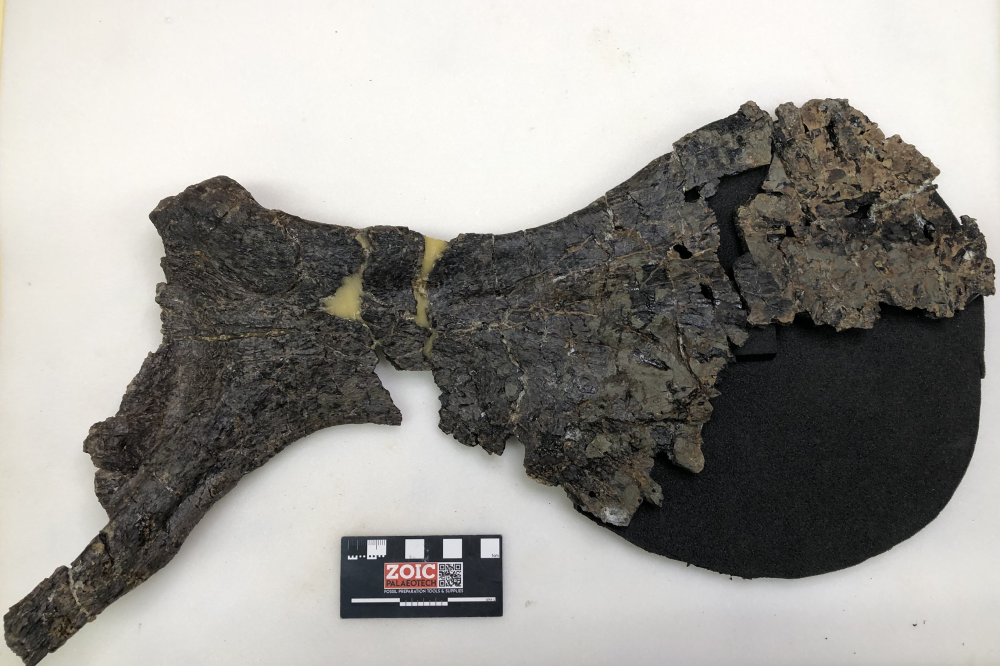A dinosaur with a hip bone the size of a dinner plate has been discovered in the UK, and it’s the country’s most complete to have been found in the last 100 years. The remarkable remains belong to an ancient herbivore that dates back 125 million years and marks a new-to-science species and genus that’s been named Comptonatus chasei.
Unique features in the animal’s skull, teeth, and other parts made it apparent to University of Portsmouth PhD student Jeremy Lockwood that the team was dealing with something special. Among them is a very large pubic hip bone that is much larger than you’d typically expect in a dinosaur of its size.
“It was probably for muscle attachments, which might mean its mode of locomotion was a bit different, or it could have been to support the stomach contents more effectively, or even have been involved in how the animal breathed, but all of these theories are somewhat speculative,” Lockwood explained in a statement.
It was first discovered in Compton Bay on the Isle of Wight by the late fossil collector Nick Chase back in 2013, inspiring the scientific name: Comptonatus chasei. Comptonatus being a combination of Compton Bay and tonatus, the Latin for thunderous, and chasei in honor of Chase.

The dinner plate for a pubic bone in question.
“This animal would have been around a ton, about as big as a large male American bison,” added Lockwood. “Evidence from fossil footprints found nearby shows it was likely to be a herding animal, so possibly large herds of these heavy dinosaurs may have been thundering around if spooked by predators on the floodplains over 120 million years ago.”
And it’s a thunderous discovery in more ways than one, being the most complete dinosaur specimen to be found in the UK in a century, according to Dr Susannah Maidment, Senior Researcher and paleontologist at the Natural History Museum, London and senior author of the paper.
“Its recognition as a new species is due to incredibly detailed work by NHM Scientific Associate Dr Jeremy Lockwood, whose research continues to reveal that the diversity of dinosaurs in southern England in the Early Cretaceous was much greater than previously realized,” she said.
“The specimen, which is younger than Brighstoneus but older than Mantellisaurus (two iguandontian dinosaurs [also known as the “cattle of the Cretaceous”] closely related to Comptonatus) demonstrate fast rates of evolution in iguandontian dinosaurs during this time period, and could help us understand how ecosystems recovered after a putative extinction event at the end of the Jurassic Period.”
The study is published in the Journal of Systematic Palaeontology.
Source Link: UK's Most Complete Dinosaur Found In 100 Years Is A New Species